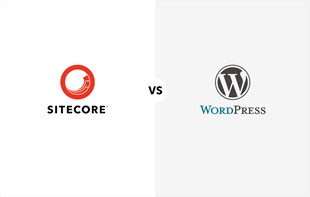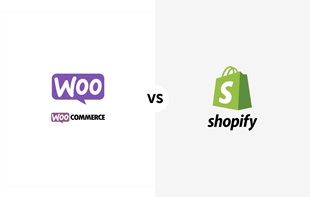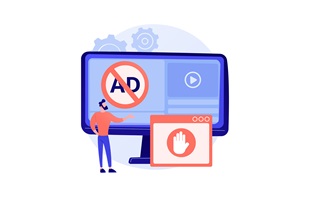How to Create Storytelling Content for your e-commerce brand?
“Marketing is no longer about the stuff that you make, but about the stories you tell.” ― Seth Godin
As marketers, we use storytelling to help customers understand our products. We use storytelling to build transparency and trust with consumers. We use stories to pitch and persuade. Without a good story, what makes your business different from the rest?
In this content writing guide for e-commerce, I’m going to explore this art in further detail.
The power of storytelling in e-commerce
Storytelling in e-commerce transcends traditional marketing. It’s not simply about listing product features. When we craft content for our customers, we look at how we can do so in a manner that aligns their values and experiences with their audience.
Just think about how much content you’re bombarded with on a daily basis! It’s storytelling that’s going to help your brand stand out amongst this so you can create that deeper connection with your audience.
Key statistics:
- Consumers are 55% more likely to purchase from a company with storytelling content they love, highlighting its impact on buying decisions.
- Storytelling can increase conversion rates by up to 30% when effectively integrated into e-commerce platforms.
The importance of content in e-commerce
In the digital age, your content is often the first point of contact between your brand and potential customers. It sets the tone for your brand's identity and values.
Creating compelling content will:
Build trust
Authentic storytelling fosters trust with your audience, illustrating your brand's values and commitment to quality.
Enhance brand recall
Memorable stories stick with people far longer than facts or figures, enhancing brand recall and customer loyalty.
Drive engagement
Engaging content encourages interaction, be it through comments, shares, or likes, amplifying your brand's reach and impact.
The impact of engaging content on e-commerce success
Engaging storytelling content doesn't just attract customers; it converts them.
- Increase conversion rates - Think about your own purchasing habits. If you come across a brand story that really hits the mark with you, does it impact your buying decision? Storytelling really can translate to higher conversion rates.
- Retain customers - Storytelling also helps to build an emotional connection. It creates a sense of loyalty, increasing the chances of a repeat purchase.
- Stand out from the crowd - In a saturated market, it’s your story that will set you apart. It shows your brand’s unique values and perspectives.
Essential types of content e-commerce merchants should create
As you can see from the graph below from Statista, one of the main ingredients when storytelling is to create an emotional response and have a human approach.
To truly resonate with your audience in this way and create that emotional link, it's crucial to diversify your content creation efforts.
Here are some essential types of content that generate demand in e-commerce and can help you establish a connection with your customers and stand out in the digital marketplace:
Product stories
Share the journey of your products, from conception to creation. Highlighting the craftsmanship, the inspiration behind the design, or the impact of the product can create a narrative that customers feel a part of.
Customer testimonials and success stories
There's nothing more powerful than hearing how your product or service has impacted someone's life.
You can add a human element to your brand by sharing customer testimonials and success stories. This shows potential customers the real-world value of what you have to offer.
Behind-the-scenes content
Give your audience a peek behind the curtain. Show them the people and processes behind your products.
Transparency like this will create trust and foster a deeper connection with your audience.
This is one of the reasons why we share our case studies here at Appnova. We like you to see what we’ve done and how we’ve done it, so you get a feel for our business.
Educational content
Provide value beyond just selling products. Create how-to guides, tutorials, or informative blog posts that help your audience solve a problem or learn something new.
By doing this, you position your brand as an authority and a trusted resource in your industry.
Interactive content
Engage your audience with quizzes, polls, or interactive videos. Interactive content is not only entertaining but also provides valuable insights into your audience's preferences and behaviours.
Tips to create compelling storytelling content for an e-commerce website
Creating compelling storytelling content requires more than just a good narrative! Here are some quick-fire tips to help.
- Know your audience - Understand their needs, preferences, and pain points. Tailor your stories to resonate with them on a personal level.
- Be authentic - Authenticity is key in storytelling. Don't just tell a story for the sake of it. Ensure it aligns with your brand's values and message.
- Use visuals - Incorporate images, videos, and infographics to enhance your storytelling. Visuals can make stories more engaging and memorable.
- Evoke emotions - Stories that evoke emotions tend to be more impactful and memorable. Whether it's happiness, nostalgia, or even sadness, tapping into your audience's emotions can strengthen the connection with your brand.
- Keep it simple - While details are important, don't overcomplicate your story. Keep it concise and focus on the core message you want to convey.
Steps to create compelling content for e-commerce
Creating compelling content for your e-commerce site is a strategic process.
Follow these steps to ensure you’re building a content strategy that not only engages your audience but also drives conversions:
- Research and understand your audience - Begin with a deep dive into your audience's interests, needs, and behaviours. Use this insight to tailor your content strategy.
- Define your brand's story - What is the message you want to share? How does your brand impact the lives of your customers? Define the narrative you want to weave through your content.
- Plan your content types - Based on your audience research and brand story, decide on the types of content you will create. Ensure there's a mix to cater to different preferences and stages of the customer journey.
- Create a content calendar - Organise and plan your content production to maintain a consistent posting schedule. This helps keep your audience engaged and improves your online visibility.
- Produce and publish your content - With your plan in place, start creating your content. Ensure it's high-quality, engaging, and aligned with your brand story.
- Measure and optimise - Regularly review your content's performance. Analyse what's working and what's not, and use these insights to refine your content strategy.
Challenges in creating compelling content for e-commerce
Navigating the world of e-commerce content creation is no small feat! There are a number of challenges you need to overcome to create exciting, storytelling content.
Distinguishing your brand in a sea of competitors
The digital marketplace is overflowing with brands all vying for consumer attention. The key challenge here is not just to be seen but to be memorable.
To do this, you really need to get into the nitty-gritty of what sets your brand apart! You simply MUST have a sharp understanding of this. But, then, that’s not all. You then need to be able to articulate this with your content.
Maintaining a stream of quality content
For many, especially smaller teams, the constant demand for fresh, high-quality content can be overwhelming. Striking a balance between quality and quantity is crucial here. This balance is what’s going to keep your audience engaged.
Assessing the impact of your content
One of the trickier aspects of content creation is measuring its success. It's about identifying the right metrics, tracking them diligently, and being ready to tweak your approach based on the insights you gather.
Key Takeaways and Recommendations
We hope that this deep dive into the world of storytelling has helped you to get a better understanding when it comes to content creation for your business.
- You need to deeply understand your audience
- Authenticity and consistency are key
- Embrace a range of content types
- Stay agile and monitor closely
- Quality over quantity
- Let data drive your decisions
If you’d like to delve deeper and create a compelling story for your brand, a creative content agency can help you to do exactly that. Contact Appnova today to get started.
Subscribe To Us








.jpg?mw=310)





























































































.jpg?mw=310)
.jpg?mw=310)













































































.jpg?mw=310)















































![The impact of online reviews on your business [Infographic]](/-/media/The-impact-of-online-reviews-on-your-business.jpg?mw=310)



![10 latest trends in digital marketing for beauty brands [Part.2]](/-/media/Appnova/Blog/ScreenShot20151026at1500471940x567/10-latest-trends-in-digital-marketing-for-beauty-brands-Part-2.jpg?mw=310)
![10 latest trends in beauty web design and digital marketing [Part.1]](/-/media/Appnova/BannerImages/18376519151_bbeaa6dafc_b-1/trends-in-beauty-web-design-and-digital-marketing/10-latest-trends-in-beauty-web-design-and-digital-marketing-Part1.jpg?mw=310)
![From story-telling to story-showing: What makes a lifestyle eCommerce? [Part.2]](/-/media/Appnova/BannerImages/ScreenShot20150929at143416/From-story-telling-to-story-showing-What-makes-a-lifestyle-eCommerce-Part-2.jpg?mw=310)



































![15 crazy things people search on Google [Infographic]](/-/media/crazy-things-people-search-on-Google.png?mw=310)




![How to LOSE Twitter followers in 15 ways [Infographic]](/-/media/Appnova/Blog/08-internal-768x534.jpg?mw=310)






![The generation of me, myself and I – Me-commerce will remain strong. [Infographic]](/-/media/Appnova/BannerImages/mecommerce-cover/mecommerce-cover/The-generation-of-me-myself-and-I--Mecommerce-will-remain-strong.jpg?mw=310)

![A Whole New E-commerce World – Alibaba and the forty others [Infographic]](/-/media/Appnova/BannerImages/camel/camel/A-Whole-New-E-commerce-World-Alibaba-and-the-forty-others.jpg?mw=310)























.jpg?mw=310)
.jpg?mw=310)
.jpg?mw=310)
.jpg?mw=310)

.jpg?mw=310)
.jpg?mw=310)




0.Comments